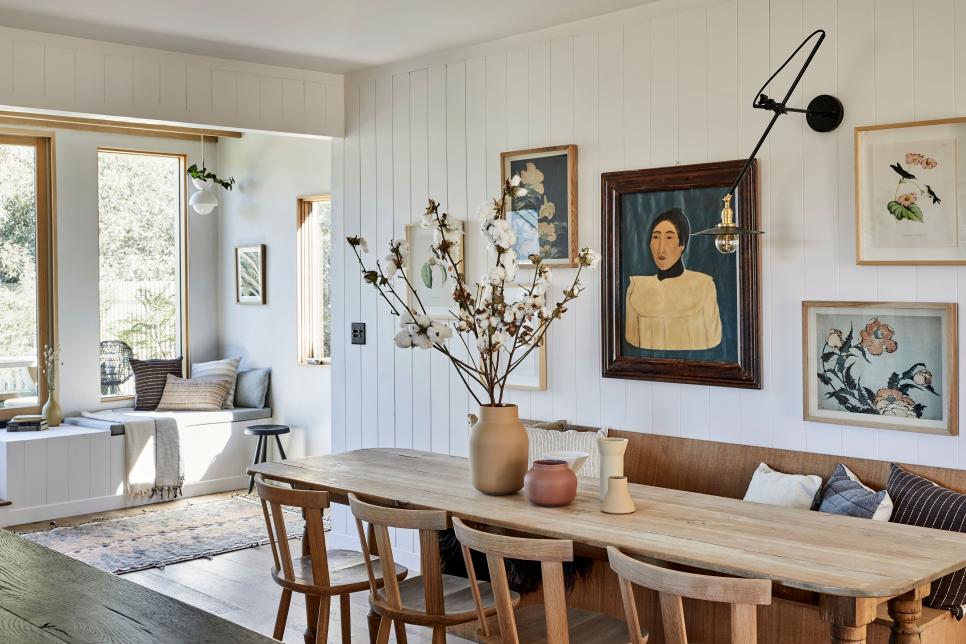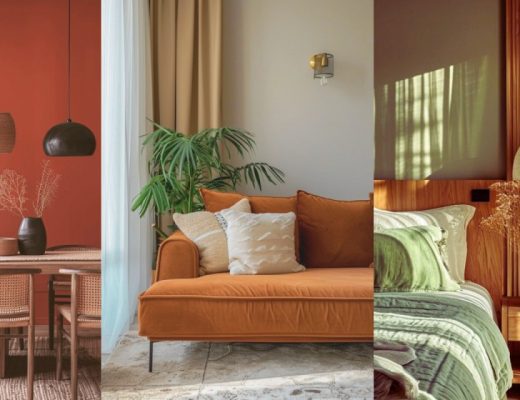An interior design concept, “Japandi”, has been taking over social media lately. Why wouldn’t it? It makes our homes more functional as it gets more cluttered, allows our spaces to look luxurious within budgets, and gives us a sense of solace when our lives become more and more chaotic every day.
What is Japandi?
As the name suggests, this is a perfect blend of Japanese and Scandinavian (region consists of Norway, Sweden, and Denmark) design concepts. A perfect fusion of Japan’s philosophy of “Wabi-Sabi”, which values imperfection and beauty of natural, handmade elements, with Denmark’s philosophy of “Hygge”, which emphasises comfort, warmth, and pleasure in simple things. Combined together, Japandi becomes a style that focuses on bright spaces, neutral yet warm colours, sustainable products, and above all – a relaxing aesthetic.
Why Should You Implement Japandi in Your Home?
You shouldn’t implement Japandi just because it is on trend. Japandi is more of a lifestyle that values simplicity, minimalism, comfort, connection to nature, and the beauty of imperfection. So, if you:
- Want your home to be decluttered and functional,
- Love Zen (relaxing and soothing) aesthetics,
- Value the beauty of imperfection
- Like handmade or natural products
- Value the importance of sustainability and want to use environment-friendly products, and
- Want to make your home look luxurious without wanting to empty your wallet
If you resonate with all or some of the above, Japandi interior styling might be what clicks for you! Japandi is the right fit for you if you want a home that gives you comfort, looks elegant, and attempts to emulate nature in it. Honestly, who wouldn’t want that?
Now that we have an idea of what Japandi is, let’s discuss how you can bring Japandi to your space and create an aesthetically pleasing home!
5 Ways to Achieve the Japandi Style
1. Declutter things
Look around your space. What looks like you could’ve lived perfectly fine without it? List unnecessary items and either sell them or pass them on to a friend or relative who might want them. This will help you to declutter your space. You can even take it a step further and reorganise the insides of your wardrobe and cloth storage units, letting go of items you wouldn’t need anymore.
Decluttering, however, doesn’t mean that you have to sell all your possessions! Keep the sustainable ones or the ones with sentimental value, like the wooden table you got passed down from your grandmother? Sell the ones that only clutter your space without adding any value.
2. Minimal yet Functional Furniture
When investing in furniture, find items that are not only good looking, but also functionally fit and occupy minimal space. Dual or multiple-functionality items are great for achieving this. For example, if you are in need to create seating in your space, choose an ottoman that can also double as a storage unit so that you can tuck away miscellaneous things like magazines or your kid’s toys into it. A bed with hidden storage is also great to keep the functionality at its peak without demanding too much space.
In the Japandi style, furniture has simple, clean lines. So, stay clear of intricate designs when shopping for furniture – the cleaner the design, the better.
3. Natural, Unique, Sustainable Furniture
Japandi style emphasises the use of natural elements – especially wood. You can furnish your dining room with a wooden table and wooden cupboard that will last you a lifetime. You can even decorate your walls with wooden panels to add a hint of luxury to your space. However, if the wood is too expensive for you, you can opt for other organic materials, like bamboo and cane, for furniture and use fabric like linen, cotton, and muslin for curtains, bedsheets, and cushion covers.
Japandi style puts importance on high-quality furniture that demonstrates fine craftsmanship and adds a statement to your place. So, look for unique, artistic furniture while shopping. It can be a uniquely designed chair or a geometric table lamp that radiates tranquillity and exquisiteness and makes your home stand out from others.
4. Neutral Colour Palette
Think of neutral colours that remind you of the Earth. If you incline towards the Japanese aesthetic, then you’ll choose light brown, pastel orange, or olive green, and you’ll prefer white, light blue, or light grey if you want to bring the Scandinavian aesthetic. To create a Japandi aesthetic, layer different neutral tones that are in harmony with your furniture and create an earthly, soothing ambience in your space.
5. Decorative Elements
For decoration, clay, glass, wood, and stone are preferable. Carefully chosen craft decorations that are meaningful to you, a few artworks on the walls, handmade pieces, and ceramic vases can bring the Japandi aesthetic to your home. A jute rug on the floor and hand-painted lamp shades are a great way to create a warm and inviting atmosphere in your home amongst the possible coolness of minimalism.
You can also choose elements that carry the colours of nature, like shades of green or tones of brown. This will ensure that nature resides in your space in various ways.
6. Indoor Plants
Lastly, don’t forget to bring plants to your home, as they are a significant part of this style. Not only do plants add style to your home, but they also improve air quality, reduce stress, boost your mood, and enhance cognitive wellness. Research says that having plants in your home or office can make you feel relaxed and comfortable.
You can decorate your bathrooms with little ferns, your living room with ceramic-potted leaf plants, and your kitchen with herbs in cane pots. If you have got empty corner spaces, hang two or three plants at different heights to add vibrance to your space. To learn more about the use of plants in your home, you can read Indoor plants: a guide to spruce up your home.
Has this article inspired you to apply the Japandi style in your interior? You can do so with the help of Sheraspace! Click here to explore our rates and packages for your customised interior design solution!






No Comments